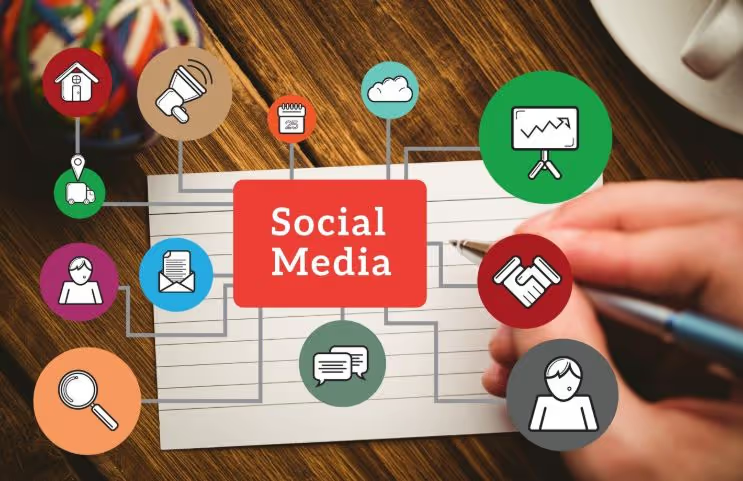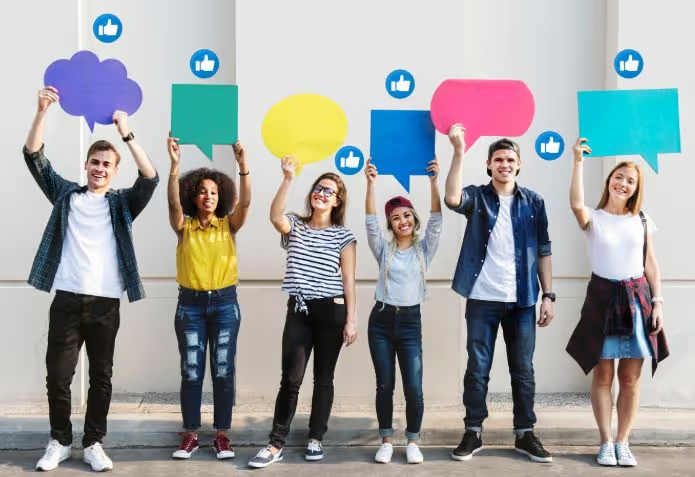Stay informed with our newsletter.
.webp)

.webp)

As digital ad effectiveness declines and privacy regulations tighten, brands are shifting from paid ads to community engagement and first-party touchpoints. By investing in owned channels like email lists, loyalty programs, events, and brand communities, companies can build direct, trust-based relationships with customers. This approach enhances personalization, boosts long-term loyalty, and reduces dependency on third-party platforms. The transition marks a strategic move toward more sustainable, data-conscious marketing that prioritizes meaningful interaction over broad but impersonal reach.

Over the past decade, paid digital advertising has dominated brand marketing strategies. From Facebook and Instagram to Google and YouTube, brands have poured billions into these platforms to reach their target audiences. But today, a major shift is underway, marketers are re-evaluating their dependency on paid ads and investing more in first-party data, owned communities, in-person experiences, and loyalty programs.
The catalyst for this transition lies in a combination of privacy regulations, platform saturation, diminishing ad performance, and a growing desire to foster authentic customer relationships. As the digital landscape evolves, brands that rely solely on paid ad models risk becoming vulnerable to algorithm changes, policy shifts, and rising costs. In contrast, those that diversify and build direct-to-consumer (DTC) channels are setting themselves up for long-term resilience and relevance.
Paid digital ads once promised laser-focused targeting and measurable ROI. But the marketing environment has changed dramatically.
New regulations like the General Data Protection Regulation (GDPR) in Europe and the California Consumer Privacy Act (CCPA) in the U.S. have reshaped how brands can collect and use data. Simultaneously, tech giants are making moves to protect user privacy, Apple’s iOS 14.5 update significantly limited cross-app tracking, making it harder to measure ad performance or retarget users effectively.
With nearly every brand advertising online, digital platforms have become cluttered and competitive. This saturation drives up ad costs and reduces performance, especially for smaller brands that can’t outbid the giants. As CPMs (cost per thousand impressions) and CAC (customer acquisition cost) rise, ROI on ad spend is decreasing.
Consumers are bombarded with thousands of marketing messages daily. As a result, many have developed “ad fatigue” or consciously ignore ads. This makes it harder to cut through the noise, even with well-designed creative.
In response, forward-thinking brands are shifting their focus toward first-party touchpoints, channels and experiences where they own the relationship and data. These include loyalty programs, pop-ups and IRL events, email/SMS, and community engagement through platforms like Discord or private forums.
First-party data refers to information that brands collect directly from their customers, through purchases, website activity, surveys, loyalty programs, or app usage. Unlike third-party data, this information is more accurate, compliant with privacy regulations, and owned by the brand.
With tools like customer relationship management (CRM) systems, CDPs (customer data platforms), and zero-party data (intentionally shared by users), marketers can build rich, personalized profiles. This enables:
For example, skincare brand Glow Recipe uses email quizzes to collect zero-party data about skin type, allowing them to recommend the perfect routine while creating highly targeted campaigns.
As consumers crave human connection post-pandemic, pop-up stores and in-person events have re-emerged as valuable brand-building tools. These experiences foster emotional engagement, brand loyalty, and give customers a chance to touch, feel, and interact with products in a curated setting.
Brands like Glossier and Parade have used pop-ups to great effect, creating Instagrammable, immersive experiences that drive both sales and social buzz. Beyond aesthetics, pop-ups serve as valuable data collection hubs, offering opportunities to capture emails, conduct feedback surveys, and build relationships face-to-face.
Modern loyalty programs go far beyond traditional punch cards or point systems. They’re becoming data-rich ecosystems that drive engagement and retention. Today’s best programs are tiered, experiential, and personalized, rewarding customers not just for purchases, but also for reviews, referrals, and social sharing.
Brands like Sephora and Starbucks have built highly successful loyalty ecosystems where members get early access to products, birthday rewards, and exclusive content, all while feeding the brand valuable behavioral data.
These programs also serve as a buffer against platform shifts. When a brand has a loyal base of direct subscribers or members, it’s less reliant on external platforms for traffic or sales.
As social media platforms become pay-to-play, brands are investing in owned community spaces, private environments where they can foster deeper connections without relying on algorithms. Platforms like Discord, Slack, WhatsApp groups, or even niche forums are being used to bring like-minded customers together.

These communities serve multiple purposes:
For example, beauty brand Fable & Mane launched a haircare-focused wellness community on Discord where customers share self-care rituals, product experiences, and attend events, all strengthening brand affinity outside traditional channels.
Amid the noise of social media, email and SMS marketing continue to deliver strong ROI. These channels are direct, permission-based, and cost-effective, allowing brands to nurture leads, recover abandoned carts, and launch new products to warm audiences.
But the key to success lies in personalization. Batch-and-blast emails are being replaced by behavior-based automations, segmented campaigns, and curated content that adds real value. SMS, though more intimate, offers incredible open rates and is ideal for flash sales, restock alerts, or VIP access.
The move away from paid digital ads toward first-party and community-driven strategies is more than just a tactical pivot, it’s a strategic evolution that:
By building their own data and communities, brands are less susceptible to changes in algorithms, cookies, or platform rules. This control ensures long-term sustainability.
First-party channels are often more cost-effective than paid ads, especially when acquisition costs are rising. Email, SMS, and loyalty programs offer higher ROI with less spend.
Owned touchpoints allow brands to foster deeper, more authentic connections. Rather than being transactional, the relationship becomes emotional and lasting.
Pop-ups, loyalty programs, and communities give brands real-time feedback and insight into customer preferences. This makes marketing smarter and more responsive.
This isn’t the end of paid advertising, but it is the end of relying on it as the sole or dominant growth engine. The future of marketing is hybrid: a balance between performance media and brand-building, automation and human connection, digital and real-world touchpoints.
Winning brands will continue to use paid media for reach, but they’ll put equal, or greater, energy into building owned ecosystems that nurture and retain customers. They’ll focus on experience over exposure, depth over breadth, and relationship over reach.
As regulations tighten and the digital landscape matures, brands can no longer afford to place all their bets on paid ads. The most resilient and forward-thinking companies are investing in first-party data, immersive events, loyalty ecosystems, and owned communities to create direct, meaningful customer relationships.
This shift isn’t just a marketing strategy, it’s a business survival tactic. In a world where control over data and connection is king, brands that own their touchpoints will own their future.
For questions or comments write to contactus@bostonbrandmedia.com
